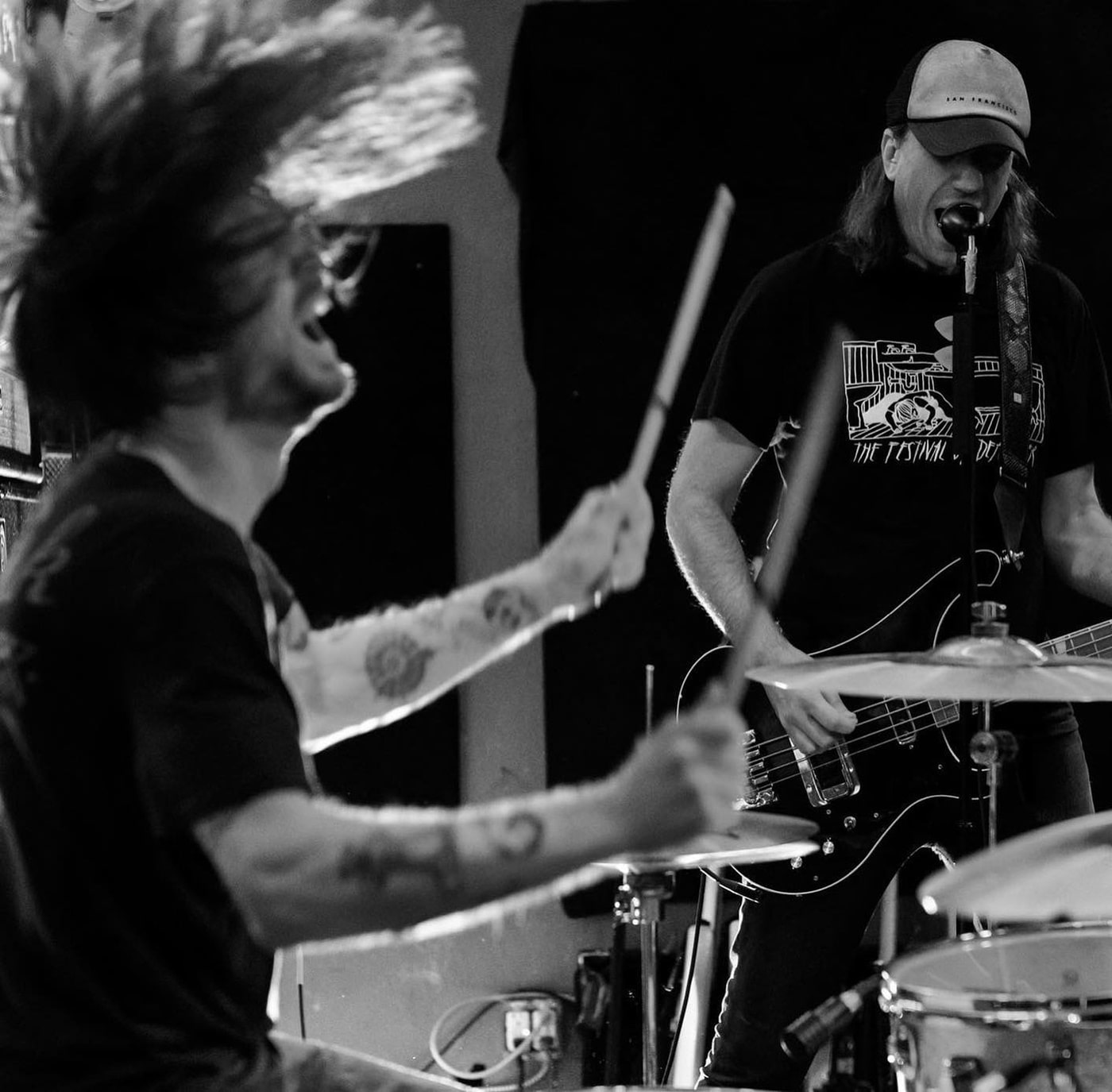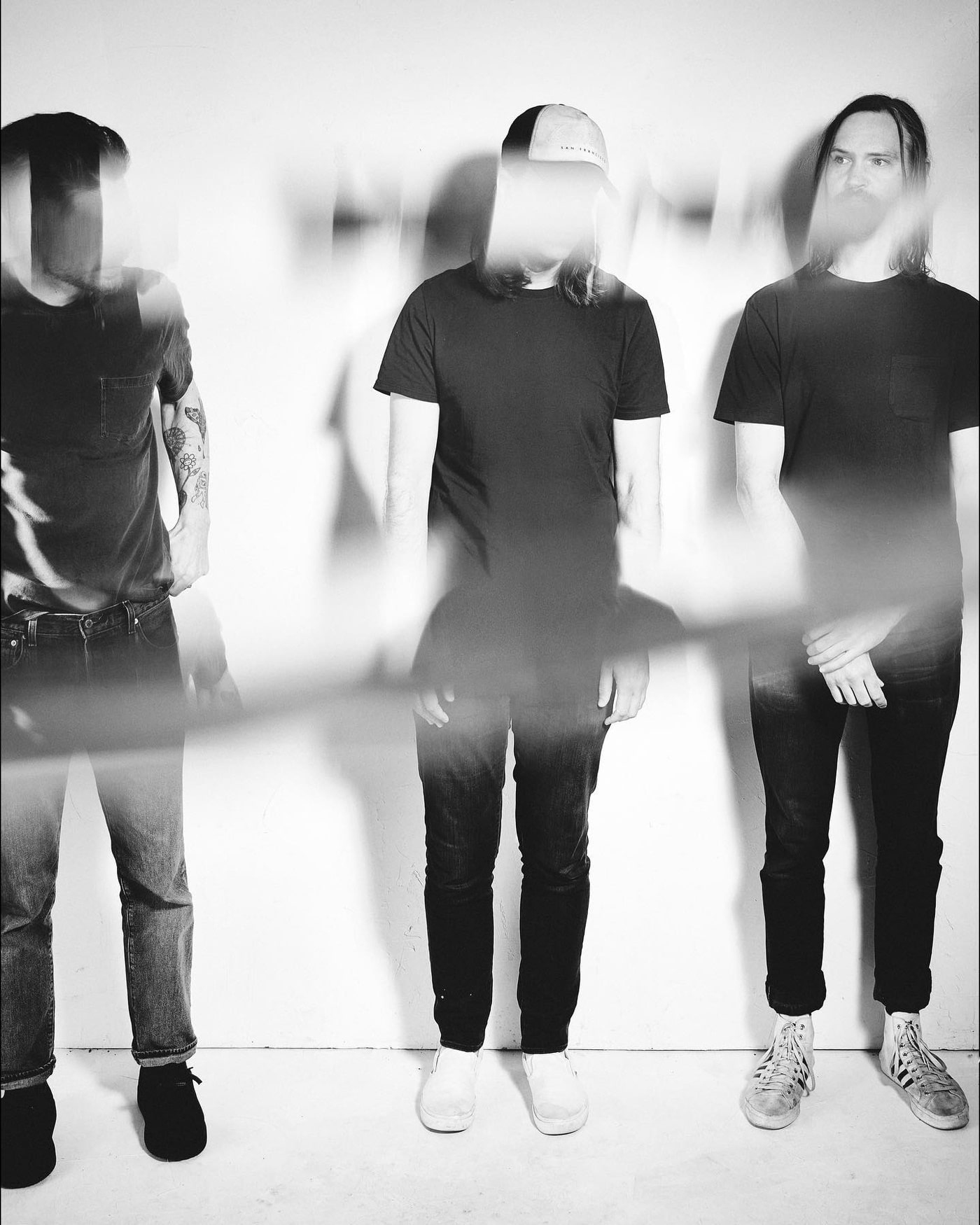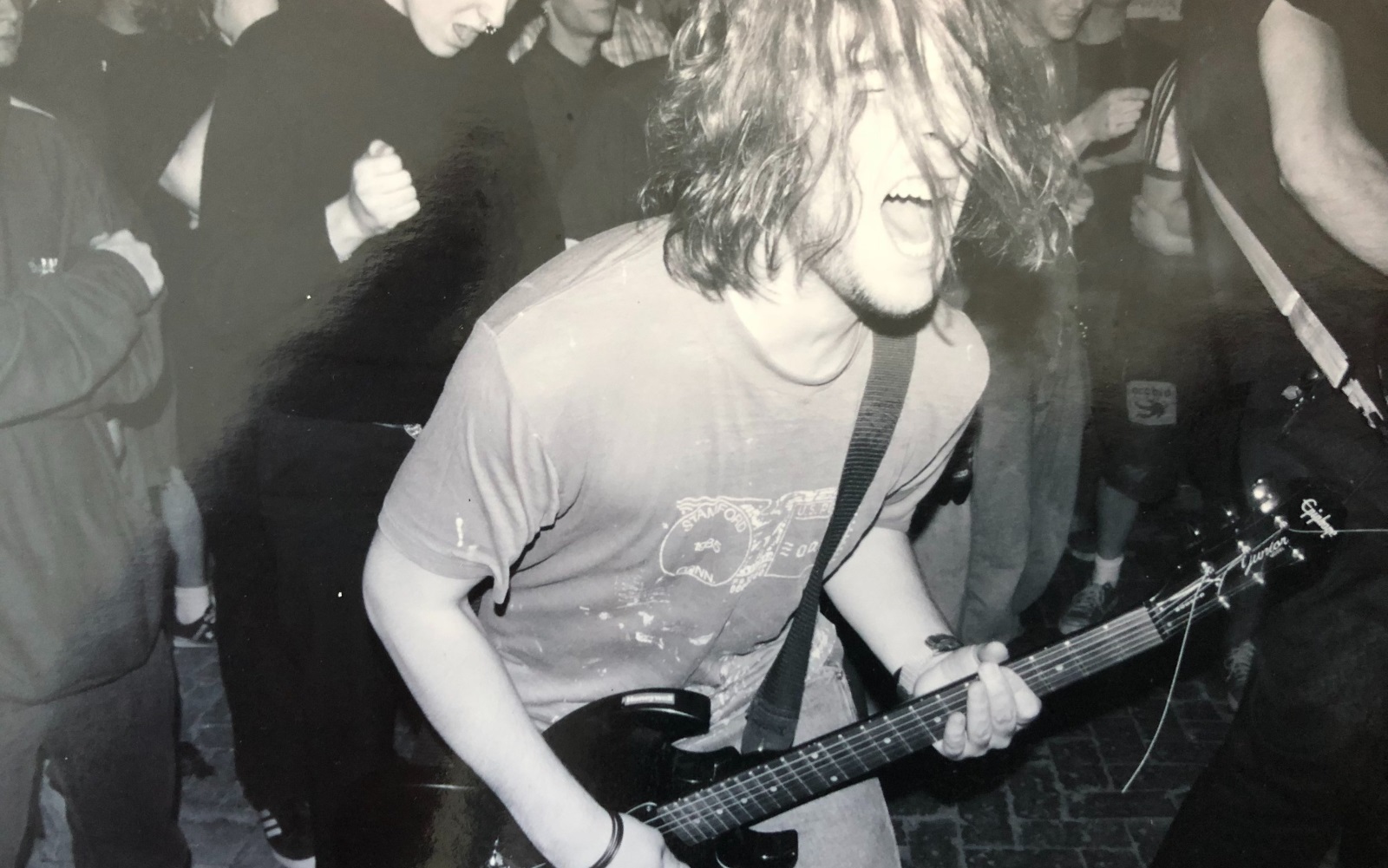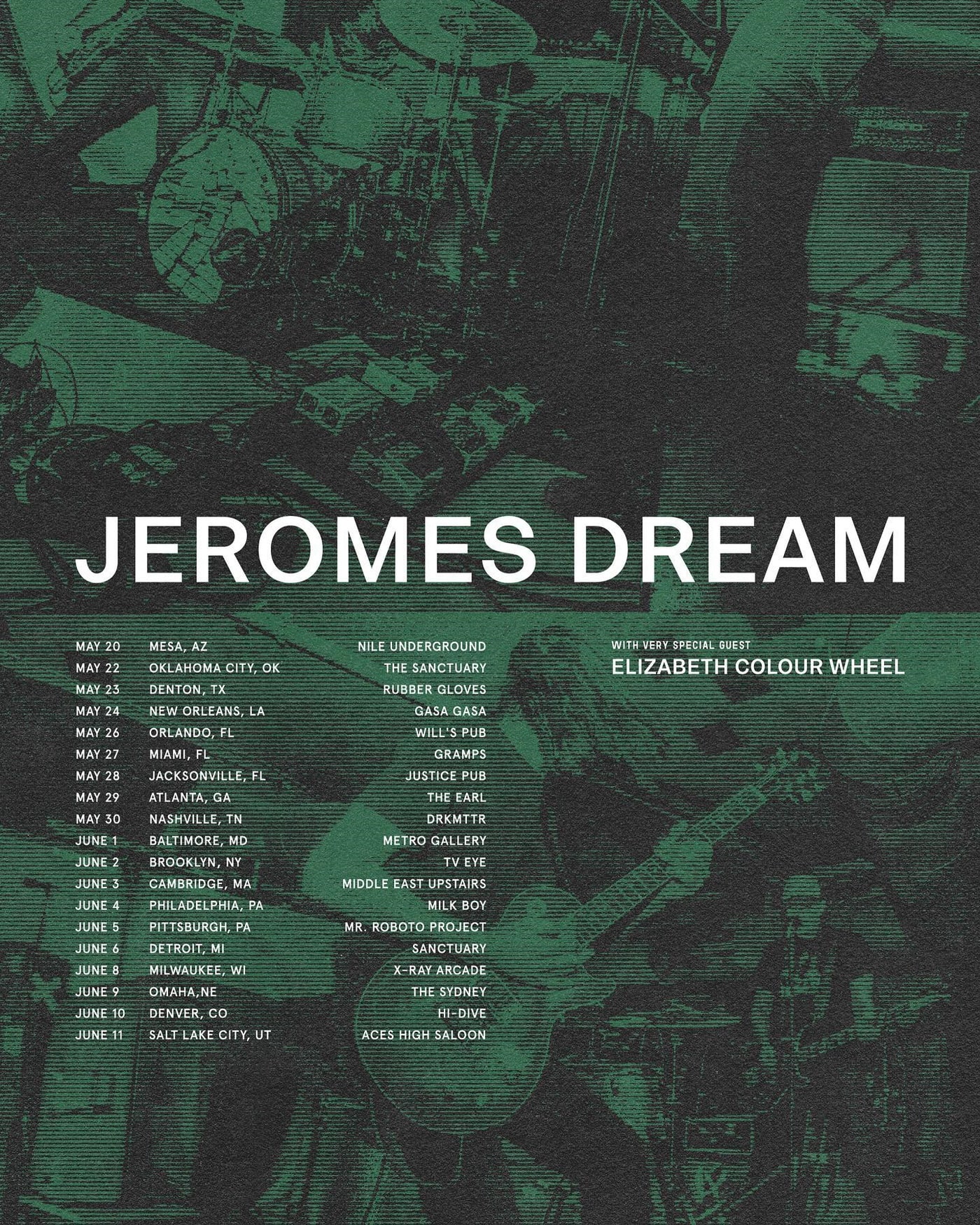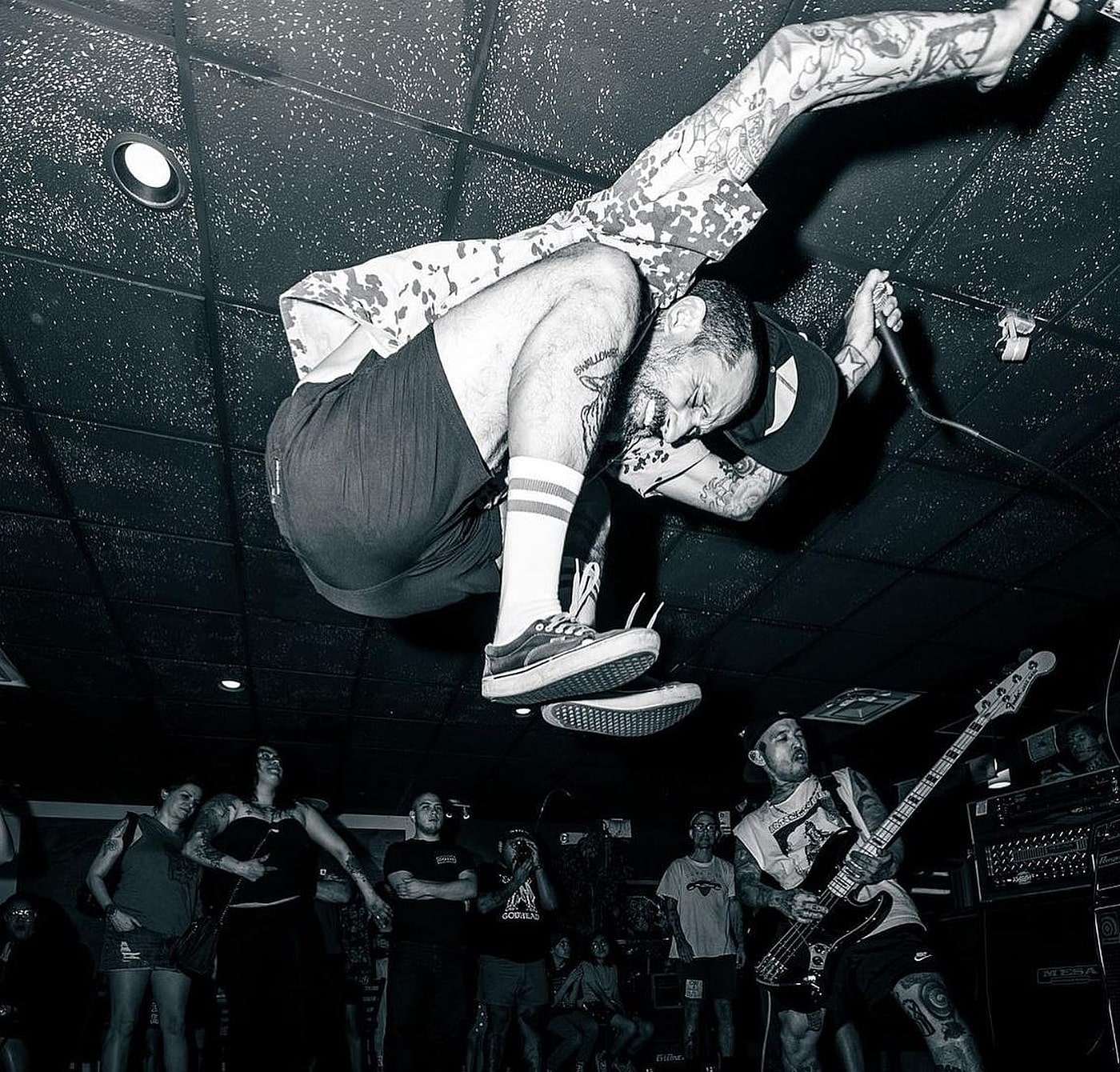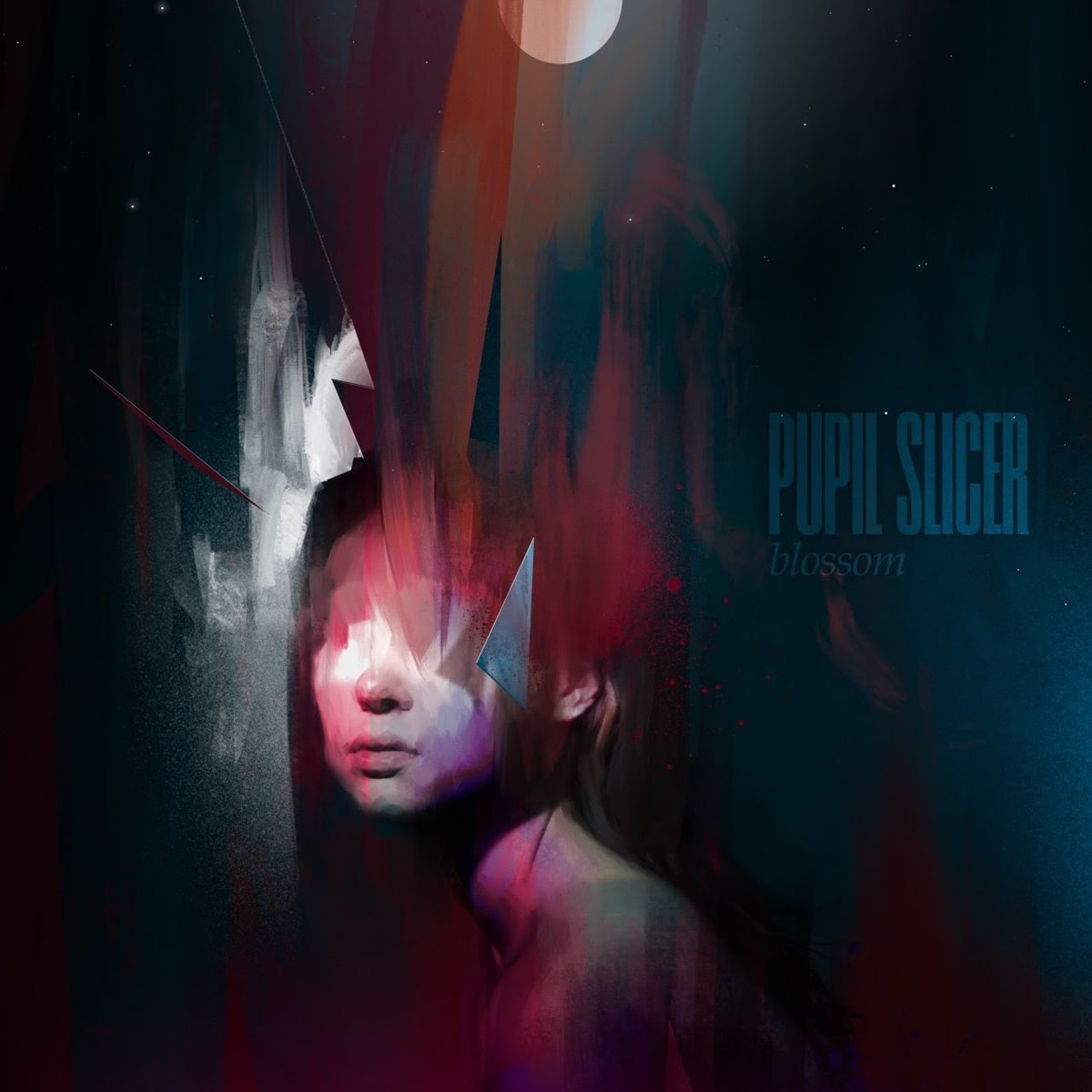Jeromes Dream, the iconic 90’s screamo/hardcore band, is set to release their highly anticipated third full-length album, The Gray In Between on May 5th via Iodine Recordings. This marks the band’s first release since their reformation in 2018, and introduces Sean Leary (Loma Prieta) on guitar. The album was recorded, mixed, and mastered by Jack Shirley (Deafheaven, Quicksand, Joyce Manor).
With influences ranging from powerviolence to math rock, Jeromes Dream has left a lasting impact on the music scene. In our new interview below, just in time of the premiere of their new single and music video “AAEEAA”, we had the opportunity to sit down with the band and recall the past, discuss their upcoming album, creative process, and more.
In their new feature for Knotfest, the band’s vocalist and bassist Jeff Smith discussed the theme of the track “AAEEAA“, which centers around the acceptance of things that cannot be changed. Meanwhile, drummer Erik Ratensperger revealed how the song’s distinctive rhythm pays homage to his musical roots and the Connecticut hardcore scene that influenced him.
Initially, there was some uncertainty about including the song on the album, but producer Jack Shirley encouraged its inclusion, citing its uniqueness as a strength. The song’s repetitive “kick kick, snare/ kick kick, snare” beat pattern was inspired by Jasta 14, a local CT band from Ratensperger’s early years of drumming. The beat is a reference to their song “BUST” and serves as an ode to their drummer, Todd Zullo.
Answered by Erik Ratensperger (drummer) and Jeff Smith (vocals, bass)
Hey guys ! Please let’s rewind it back to 2018 and let’s recall your fresh new start with Jeromes Dream back then. What inspired you to reunite after such a long hiatus?
ERIK: We spoke on the phone as a band for the first time in 17 years in 2017, (It marked 20 years since we started the band in 97), and the idea of playing together came up. The three of us were living in three different parts of the country so we weren’t sure if that would actually happen — but one thing led to another, and we found ourselves preparing to do just that. I think after speaking on the phone together for three hours and catching up, reminiscing, and talking about the old days really lit us up. I think there was a mutual agreement that if we could do it again, we should…
How did the pandemic influence you both personally and as a band?
ERIK: Before the pandemic in 2019, we were touring (A LOT), and were scheduled to return to Europe that spring (April 2020). We were set to play ROADBURN, but everything quickly came to a halt.
I think there was a good amount of time where everyone was trying to process what was actually happening, and bearing with the idea of so many unknowns. Personally, in the throes of the pandemic, I found myself unmotivated, uninspired, and feeling a bit low and lost.
I was living in LA during the early months of the pandemic, but in July 2020 I had the opportunity to move to SF, where Jeff and Sean live. So Jeff came down and helped me move, packing both our cars with whatever would fit.
With Jeff, Sean and myself now all living in SF, eventually, the band began rehearsing again, and naturally, began writing new music. We weren’t on a timeline, we had no schedule, no pressure, nothing but our weekly meetups. It was the one thing that kept me motivated, creatively inspired, and forward moving.
How did the band come to work with guitarist Sean Leary of Loma Prieta, and how has his addition influenced Jeromes Dream’s sound on The Gray In Between?
ERIK: Before the pandemic, when we were slated to return to Europe, and recruited Sean to join us as second guitarist for that tour. But since I’ve moved to SF in 2020, and nothing on the schedule, we just started practicing and writing.
Initially, the idea was to rehearse and write here in SF, then share our developments with Nick (who is based in Connecticut) — but the truncated version of this scenario is that it proved to be very difficult to keep Nick involved in the process. We had every intention of including Nick in the process of writing during what became The Gray In Between, but unfortunately, it didn’t work out. And eventually the entire dynamic of the band changed and became evident that the band had entered a new chapter during that time — and this next chapter is comprised of Jeff, Sean and myself. It feels like a new beginning in so many ways. It feels like we’re at the starting line with The Gray In Between.
What was it like working with Jack Shirley on The Gray In Between, and how did his production style influence the final product?
ERIK: Jack has become a dear friend and collaborator over the years. We recorded our first LP in 2019 with him so when it came time to consider bringing The Gray In Between into the studio, it was a no-brainer that we were going to do it with Jack.
Jack is so technically proficient and talented but what we also really love and appreciate, is the ease we feel when we are in his studio. It’s comfortable, it’s cozy, and Jack has a tendency to bring us vegan baked goods to every session.
Regarding production style; Jack is actually quite hands off; he’s present, and he is involved, and he is listening to every single thing, but he allows the band to paint their own canvas — but that canvas was stretched by him, ya know what I mean?
Can you tell us more about the lyrical themes on The Gray In Between, particularly the influence of the Russian invasion of Ukraine on “Stretched Invisible From London”?
JEFF: I struggle deeply with anxiety, as I know many folks do. But I often find myself trying to understand and feel what other difficult moments must be like for those experiencing them. On The Gray in Between I move in and out of my own anxiety and into what I imagine the worst moments on the worst days of other people’s lives might be like.
With Stretched, I found myself in one of these moments, trying to imagine what artists who are just trying to create beauty must have been feeling. The constant barrage of rockets. The uncertainty of the quiet. The middle finger that is creation in the midst of destruction. I feel like we can learn a lot from the artists of Ukraine and other zones of conflict around the world.
What is the general sentiment among your friends regarding the ongoing conflict in Ukraine, and how has this sentiment evolved over time? Politics and world news wise, what’s the main focus now?
ERIK: What’s happening in the Ukraine is horrific: but I know Ukraine will ultimately win. They have proven themselves to be an incredibly resilient, courageous people, and their leadership and military continue to display remarkable competence. If they win, democracy wins. The world wins. Humanity wins. Fuck war, fuck strongmen, and their propaganda. Power to the Ukrainian people.
In what ways do you think musicians can use their platform to raise awareness and support for Ukraine’s struggle with war, but also address other conflicts or injustices?
ERIK: So long as the expression is authentic to the artist, I think any type of acknowledgement of a matter that is impacting the world at large, or even local communities, can be a good thing — political or otherwise. Whether it’s simply addressing matters in a conversation like this, alluding to it in a song, or in a painting, or a poem, etc..
Additionally, if you have a “platform” that can reach people at scale, that’s where you can raise money swiftly, and direct it to the organizations that know exactly where to apply it to have the greatest impact. I’m thinking of groups like cold play, or beyonce.
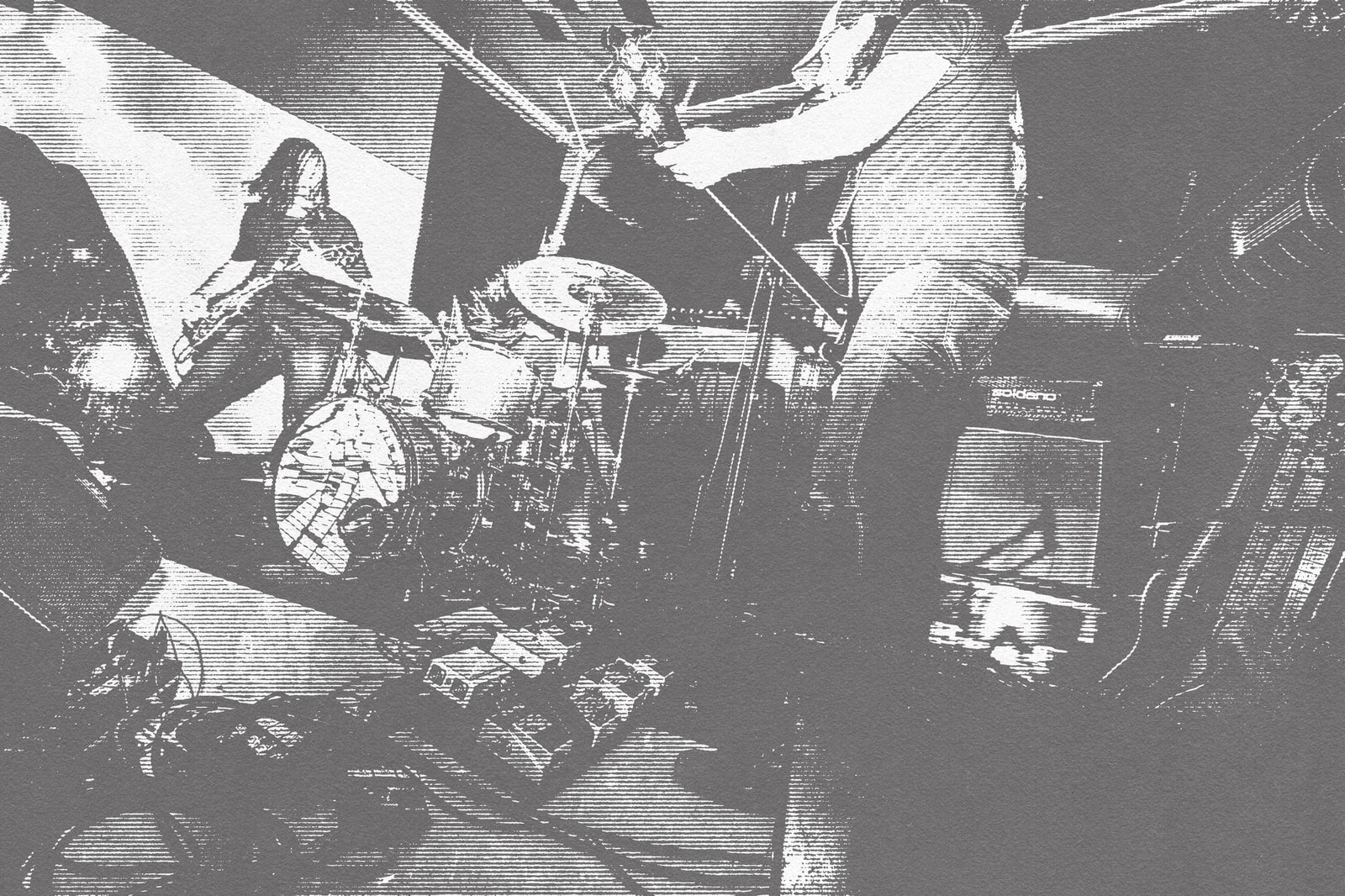
Apart from “Stretched Invisible From London,” how does the album’s title reflect its overall themes and sound, and what was the inspiration behind it?
JEFF: So often we get trapped in the black and white of what we think is supposed to happen in every situation. But more often than not there is no black or white, there’s just gray. It takes a lot to separate from the moment and remember that our own perception and experience isn’t always that of those experiencing the same moment we are. I want to dissect these moments. I want to dissect the realization a person has when they step out of their own experience and try to imagine the experience from another person’s point of view. And I want to show it to the person who has the moment. It would benefit us all to try to do this more often.
What do you hope listeners take away from The Gray In Between?
JEFF: I hope that it will remind people to step outside of themselves as often as they can. I hope it will strengthen the collective empathy of its audience. I hope it serves as an unlikely bond. I hope that people will remember to treat each other better than yesterday. It’s never too late to embrace positive change even when things feel hopeless. Accept. Embrace. Apologize. Forgive. Keep moving forward.
Music wise, how did you go about your creative process this time? How would you describe the process of creating a new sound by combining different musical styles and influences, and how important is it for the band to continue to innovate and experiment? How did the band balance exploring new sounds while staying true to its roots?
ERIK: We weren’t deliberate in achieving the result of the album: we captured what we captured at the time it was captured. It came out as a result of the energy looming around it and the headspace we were in at the time. I think it also successfully captured Sean’s presence in the band. The guitar sounds like Sean, but it folds into the sonic narrative of JD. It’s seamless, and I honestly wouldn’t change a thing about it.
The process typically starts with me bringing riffs or ideas to rehearsal, and then workshopping them in the room together. Sometimes, we’d just play a part over and over for 30 minutes and let it evolve. It had to feel right. We’d come away from rehearsals with demo recordings and listen to them on repeat til the next rehearsal and keep refining, and assembling. Every week, it’s as if we were stacking, and stacking, and before we knew it, we had a group of songs that we were so amped on. That’s what became The Gray In Between.
What can fans expect from Jeromes Dream’s upcoming tour with Elizabeth Colour Wheel, and how has the band’s live performance evolved over the years? How do you balance the desire to experiment with new ways of performing with the need to stay true to your established sound and keep your audience engaged?
ERIK: In a short answer — we never box ourselves in: We’re always trying to push our limits, challenge our capabilities, and exceed expectations. I think it’s accurate to say that applies to both our creative evolution, and our live performances. They’re one and the same to me.
May 20: The Nile Underground in Mesa, AZ
May 22: The Sanctuary in Oklahoma City, OK
May 23: Rubber Gloves in Denton, TX
May 24: Gasa Gasa in New Orleans, LA
May 26: Will’s Pub in Orlando, FL
May 27: Gramps in Miami, FL
May 28: Justice Pub in Jacksonville, FL
May 29: The Earl in Atlanta, GA
May 30: Drkmttr in Nashville, TN
June 1: Metro Gallery in Baltimore, MD
June 2: TV Eye in Brooklyn, NY
June 3: Middle East in Cambridge, MA
June 4: Milk Boy in Philadelphia, PA
June 5: Mr. Roboto in Pittsburgh, PA
June 6: Sanctuary in Detroit, MI
June 8: X-Ray Arcade in Milwaukee, WI
June 9: The Sydney in Omaha, NE
June 10: Hi-Dive in Denver, CO
June 11: Aces High in Salt Lake City, UT



